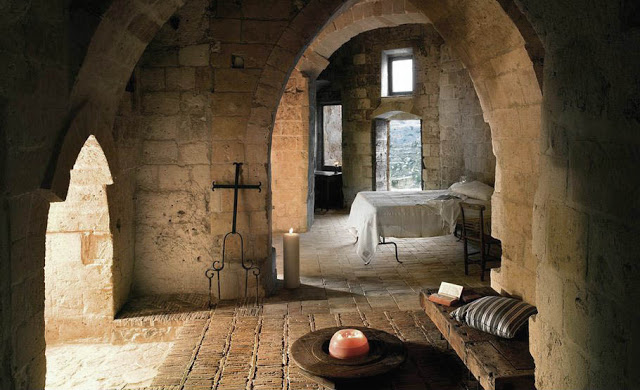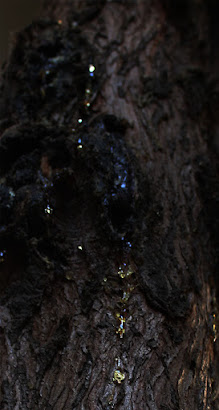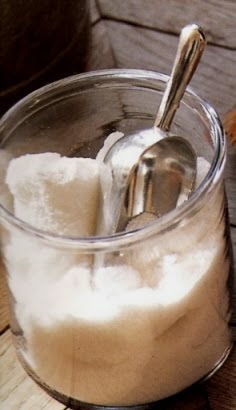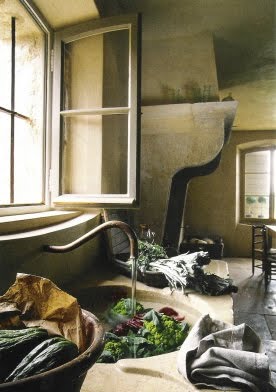Enjoy Making Bath Salts
This article is copyright © 2004-2007 by Natural Sourcing, LLC (www.fromnaturewithlove.com) and is reprinted with permission.
At the end of a long day, there is nothing quite as relaxing as slipping into a luxurious tub filled with warm bathwater. A soothing bath helps to melt away the day's emotional stresses and helps to ease physical soreness.
The choices for bathwater additives are many: bubble bath, bath oils, bath teas, milk baths, fizzing bath bombs, and of course, aromatic bath salts. Bath salts are a wonderful choice because they have the ability to greatly enhance the physical and emotional benefits of bath time. For centuries, people have bathed in the mineral-rich seas of the world to help promote good health and beautiful skin. Ancient records show that people traveled many miles to bathe in salt waters such as the Dead Sea. Bathing in salt water can stimulate circulation, hydrate the skin, increase moisture retention, promote cellular regeneration, detoxify the skin and soothe dry or irritated skin. Bathing in salt water also reduces inflammation of the muscles and joints, relaxes muscles and relieves pain and soreness. Adding natural essential oils such as lavender provides additional therapeutic benefits.
Using the recommended 1-2 cups of salts per bath can be expensive when paying the prices that many bath salt retailers charge. Some bath salt makers package their prepared salts in quantities of just one to four ounces. Aside from a temporary burst of fragrance when poured into the tub, small quantities of salt provide minimal therapeutic benefit.
Equipped with the below recipe and good sources for quality salts and aromatics, it is easy to make affordable, skin nourishing, fragrant bath salts. The salts can be left unfragranced, or pure essential oils can be included to provide added therapeutic benefit. Alternatively, bath salts can be fragranced with one of the hundreds of different cosmetic grade fragrance oils available. All of the ingredients can be obtained through From Nature With Love (www.fromnaturewithlove.com).
Bath Salts Recipe
2 lbs. of Pure Sea Salts, Dead Sea Salts or Epsom Salts (approximately 2 cups)
1 teaspoon of Avocado, Shea, Jojoba or Other Cold Pressed Vegetable Oil (optional)
Liquid FD&C or D&C Dye as a Colorant (optional)
10-14 drops Essential Oil* or Fragrance Oil (optional)
1 oz. Dendritic Salts (optional but recommended if fragrancing bath salts)
Use any combination of mineral-rich salts and place in a bowl. Mixing different grain sizes together lends visual interest. If coloring the bath salts, add liquid dye drop by drop (3-6 drops should be sufficient) until a consistent but soft color is achieved. Avoid using too much colorant as it can transfer to the skin at bath time. In a separate bowl, add the essential oil or fragrance oil to 1 oz. of dendritic salts and mix well. Dendritic salts are optional but they help to discourage clumping and help hold the fragrance. Although tempting, do not add more than 10-14 drops of essential or fragrance oil because these oils can cause irritation in large concentrations. Add the dendritic salts to the bowl that contains the other salts and mix. If dendritic salts are not used, add the essential or fragrance oils directly to the other salts and mix well. To add moisturizing properties to the salts, add 1 teaspoon of a quality, cold pressed vegetable oil and mix well. Please note that the vegetable oils found at the grocery store are generally not cold pressed and are not very nourishing for the skin. The bath salts can be packaged in a jar, tin, tie bag or cello bag.
*Essential oils are natural, concentrated, fragrant oils distilled from pure plant material. Some essential oils such as cinnamon and clove should be avoided for skin care because they can be too harsh. Check with the supplier or a source such as www.aromaweb.com when selecting essential oils for skin care use.
To Use: Add 1-2 cups of bath salts to running bath water. Stir the bathwater before getting in, especially if the bath salts included coarse grain sizes.
Types of Salts
Below is a short list of commonly available salts that can be used when making bath salts. Sea salts and Dead Sea salts are generally available in a variety of grain sizes. Mixing grain sizes can add texture and visual interest to bath salts. Keep in mind that chunky bath salts look beautiful, but they will take longer to dissolve in bathwater.
Sea Salts: Sea salts are mineral-rich "all purpose" salts commonly added to bath salt blends. Next to Epsom salts, sea salts are the most inexpensive salts available. They help to draw toxins from the skin and soothe sore muscles.
Dead Sea Salts: Dead Sea salts generally have a higher mineral concentration than ordinary sea salts. Dead Sea salts can help relieve aches and pains, reduce stiffness after exertion, relax muscles and relieve skin problems such as acne, eczema and psoriasis.
Epsom: Epsom salts are the most affordable and readily available salts available. They are often used to help ease muscle tension and joint discomfort.
Exotic Salts: Other more exotic salts such as Hawaiian Red Sea Salts (Alaea), Black Sea Pink Salts, and Icelandic Geo-Thermal Brine Salts are also available. These salts generally are more expensive, but their coloration, texture and therapeutic properties are highly sought after.
Dendritic Salts: Dendritic salts are added to bath salts for their ability to retain fragrance. Essential or fragrance oils are first added to the dendritic salts and then the fragranced dendritic salts are mixed into the other salts.
From Nature With Love offers all of the salts, ingredients and packaging supplies described within this article. For more information, please visit From Nature With Love
This article is copyright © 2004-2007 by Natural Sourcing, LLC and is reprinted with permission. This article may be reprinted provided that all credit information remains intact.
. . .
I just ran across "From Nature With Love" when researching for another article. I was impressed with the storehouse of information they have amassed (check out their Information Library and their Recipe Database) and what appears to be a very comprehensive selection of high quality essential oils, including completely organic offerings. Admittedly, I'm somewhat of a novice on the subject of aromatherapy and home-made skin care products, but I found it all very intriguing and I'm seriously contemplating ordering a few items myself. I'm always drawn to any skin care product line with an "apothecary" look to their packaging -Those little brown bottles with the stoppers - Why are they so appealing?!
Photo credits in order of appearance: Côté Sud, Dec 2000-Jan 2001
All other photos courtesy of From Nature With Love




































































No comments:
Post a Comment
Note: Only a member of this blog may post a comment.